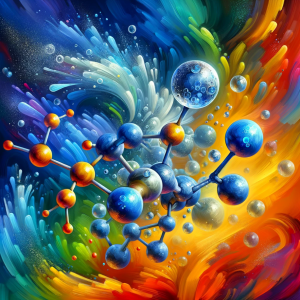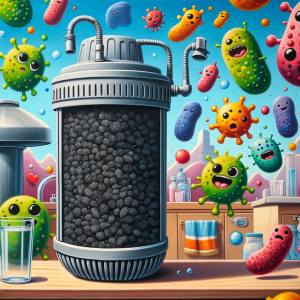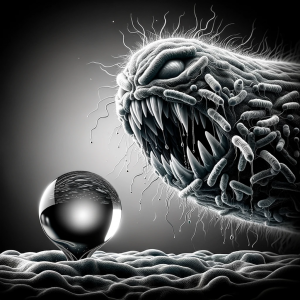Carbon: Burnt, Black and Good For Water?
Learn more about carbon filter media and why and when to replace your filters!

Carbon’s versatility extends beyond water filtration to medical uses like absorbing toxins and drug overdoses. It’s found in products like carbon capsules and is integral in filtration systems like nose masks and air filters. Carbon, produced by burning organic materials, features microscopic holes that enhance its adsorption capability, acting like a magnet to contaminants. This makes it effective in water filtration, especially for removing chlorine, its by-products, and volatile organic compounds. Its affordability and efficiency make it a popular choice in various filtration applications.
The contact surface of carbon is amazing; it is estimated that just a teaspoon of activated carbon has a contact surface area the size of a football field.
Carbon quality varies, impacting its effectiveness in water filtration. Filters, available in granular, powdered, or block forms, are made from materials like coal, wood, and coconut shell. High-quality carbon improves water filtration, commonly used in popular faucet and fridge filters. While carbon captures contaminants, it doesn’t remove hardness, arsenic, fluorides, some heavy metals, and nitrates.
Carbon Does not Remove Bacteria!

The main limitation of carbon and carbon filters is that they need regular replacement to ensure effective water filtration. Over time, carbon can become a breeding ground for bacteria. Here’s a brief list of substances that carbon adsorbs:
● Alachlor
● Atrazine
● Benzene
● Carbofuran
● Carbon tetrachloride
● Chlorine
● Chlorobenzene
● Dibromochloropropanes (DBCP’s)
● 1,2-Dichloropropane
● 1,3-Dichloropropene
● Toxaphene
● Chlordane
● Radon
● Simazine
● Toluene
● Xylene
● PCBs (Polychlorinated biphenyls)
This list includes various gases and oils, highlighting the broad adsorption capabilities of carbon.
BACTERIA IS THE BIGGEST ENEMY TO WATER!
How Often Should I Change My Filters?

Filter replacement times vary depending on usage and water quality. We recommend our Purity Bay customers change filters every 18 months due to the effectiveness of the Purity Bay Multistage processor. However, some clients prefer a 12-month replacement cycle for optimal water quality. For systems without the full Purity Bay setup, it’s advisable to replace carbon filters every 6 months to ensure consistent water purity. A change in water taste can be a good indicator that it’s time to replace the filter.
Quality?
Our filters are crafted using high-quality materials and methods. The post-filter is made of fine Granular Activated Carbon (GAC) from coconut shells, which gives the water a notably sweet taste. For our pre-filters, we use a unique process that transforms coconut shell carbon into a block under high pressure, ensuring precise pore size for effective filtration and great-tasting water. These filters are 5-micron rated and excel at reducing chlorine taste, odor, and other impurities carbon is adept at adsorbing.
To guarantee quality and safety, our filters are made from materials that meet NSF/ANSI Standard 42 certification. This explanation should offer a clearer picture of the effectiveness of our carbon filtration system.
-Dennis
